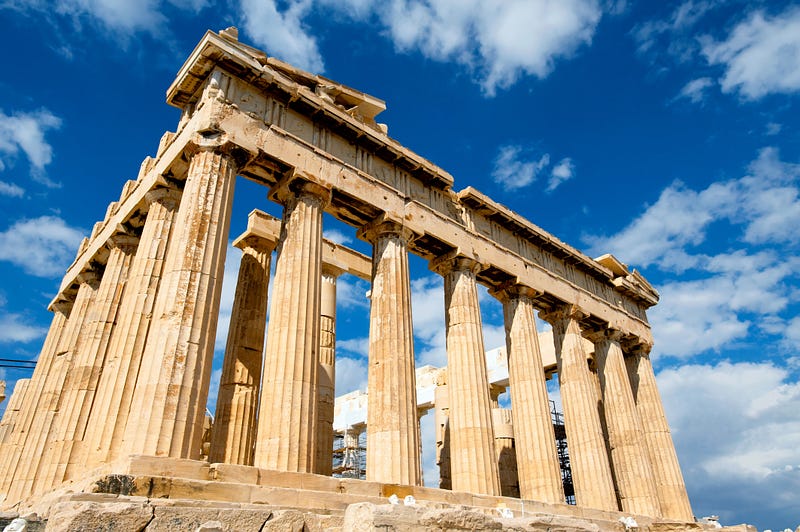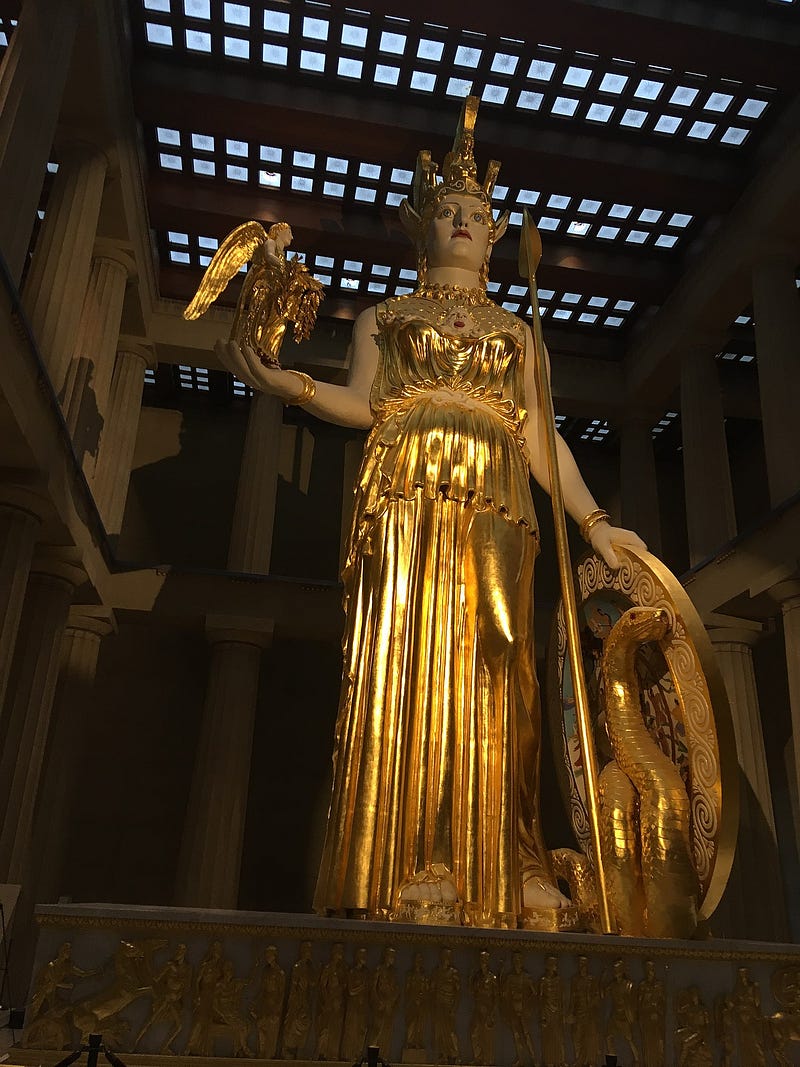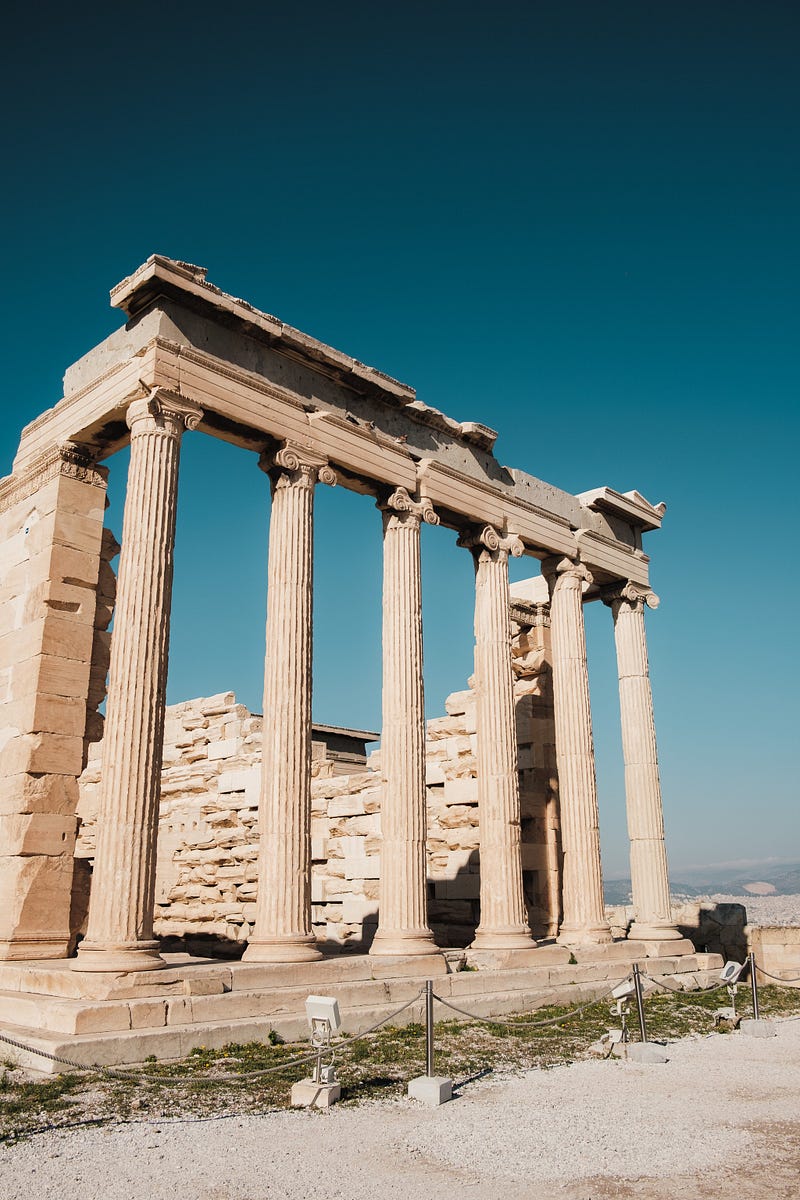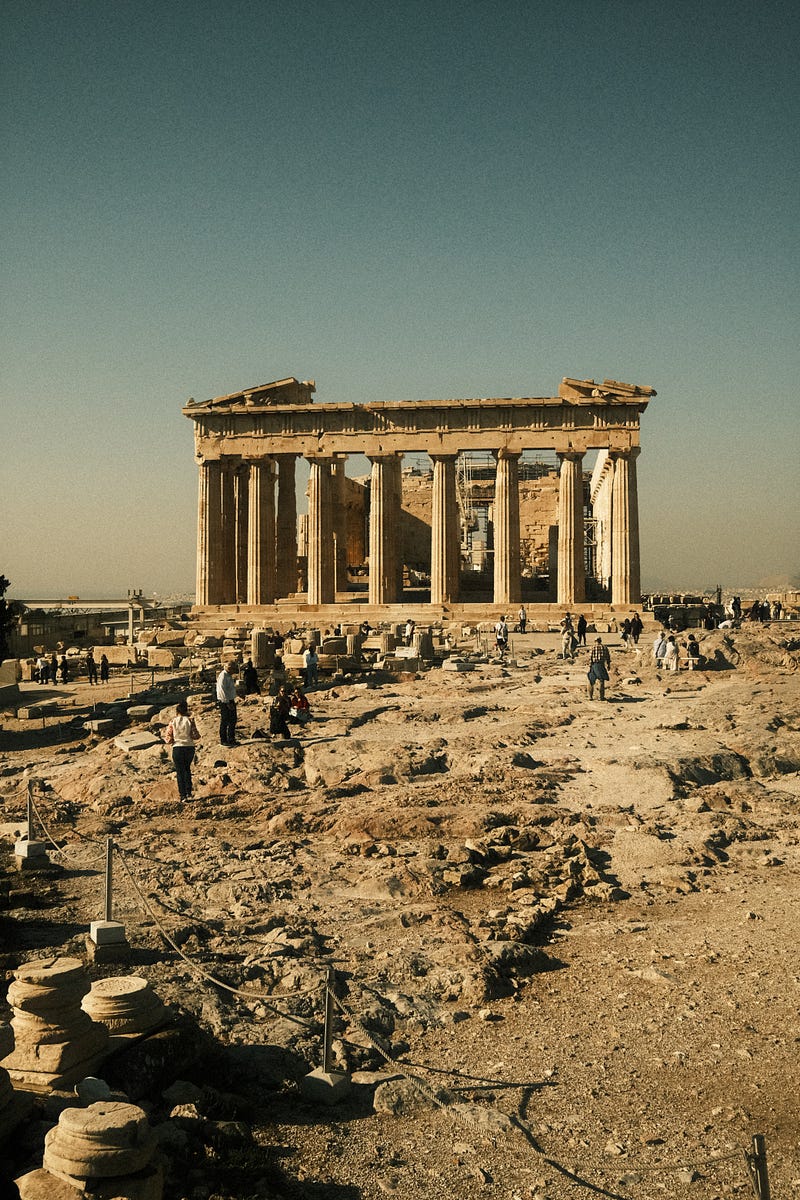# Unveiling the Secrets of the Parthenon: A 15-Year Journey
Written on
Chapter 1: The Parthenon - A Symbol of Power
Standing majestically above Athens, the Parthenon represents the guardian goddess of wisdom, art, and warfare—an emblem of the city's immense power and prosperity in ancient times. Today, it is recognized as one of the most extraordinary architectural achievements, marking the dawn of Western civilization. This article delves into the temple's construction, purpose, and design style, addressing key questions about this remarkable structure.

[Photo by Pixabay]
In ancient Greece, elevated areas within cities served as sacred worship sites. In Athens, the Acropolis—a naturally elevated plateau standing 70 meters above the Agora—became a revered religious locale. The grand structures that remain today were built between 447 and 400 BC, during a time when Athens was recovering from the devastation of Persian attacks.
When was the Parthenon constructed? The answer traces back to 480 BC when Persia launched an assault on Athens, resulting in widespread destruction, including the temple dedicated to Athena Polias, the city's protective goddess. After defeating the invaders, the Hellenes returned to Athens to begin rebuilding. However, the Acropolis remained in ruins for nearly three decades, symbolizing the sacrifices made during the conflict.
In 448 BC, Pericles initiated plans to restore the sanctuary on the Acropolis. He persuaded leaders from other city-states to participate in this significant project. The construction of the Parthenon, the first new edifice on the sacred hill, commenced in 447 BC.

[Photo by Denis Zagorodniuc from Pexels]
Chapter 2: Architectural Marvel
The design of the Parthenon drew inspiration from Mycenaean architectural styles, particularly the megaron structure, prominent between the 16th and 11th centuries BC. The architects Iktinos and Kallikrates, under the supervision of Phidias, created a large, predominantly Doric-style temple with subtle Ionic elements. This deliberate blend was meant to symbolize Athenian grandeur and inspire admiration.
Constructed from Pentelic marble, the Parthenon utilized a unique phantom-bow technique that allowed for a lightweight yet sturdy framework. The temple's elongated rectangular design featured two unconnected halls with entrances on opposite ends, all framed by a portico supported by six columns. A colonnade of Doric columns surrounded the entire structure, with 17 columns on the long sides and eight on the shorter ends. The roof was crafted from wood and adorned with marble tiles.
The Parthenon exemplifies the exceptional skill of ancient architects. Its seemingly perfect proportions were achieved through intentional deviations that created an optical illusion. The stylobate, the uppermost part of the temple’s base, curves slightly upward at the center of the longer sides, while the corner columns are marginally thicker and set apart from the others. Additionally, the columns taper as they ascend, broadening at about one-third of their height.

[Photo by Alex Azabache from Pexels]
Chapter 3: A Glimpse Inside
The Parthenon was constructed using an astonishing 20,000 tons of marble, measuring 69 meters in length and 30 meters in width. The eastern tympanum depicted the birth of Athena, while the western tympanum illustrated the contest between Athena and Poseidon for the guardianship of Attica. The pediment decorations featured acroterions adorned with acanthus leaves and palmettos, with winged Nike figures at the corners.
The temple's frieze, designed by Phidias, wrapped around the entire structure, measuring 160 meters in length and consisting of 115 panels. It depicted scenes from an Athenian religious festival in which citizens processed toward the temple to present a robe woven by selected maidens to Athena Polias. Some interpretations suggest that the frieze may represent the legendary sacrifice of Erechtheus’ daughters, symbolizing the Athenians' desire for divine favor during times of conflict.

[Photo: Greysanatomylabtech, CC BY-SA 4.0, via Wikimedia Commons]
Chapter 4: The Evolution of the Parthenon
While the Parthenon has endured through the centuries, it has not escaped damage. The first major destruction occurred at the end of Roman rule, when a fire ravaged the building. In the 4th century AD, it was reconstructed, and over the centuries, the temple transformed from a pagan shrine to a Christian church, then into a mosque during the Ottoman occupation.
In the 17th century, it was repurposed as a gunpowder depot, which led to catastrophic damage during a siege in 1678. By the early 19th century, many sculptures were removed, with a significant portion now housed in the British Museum. Reconstruction efforts have been ongoing since the late 19th century, with the Parthenon designated as a UNESCO World Heritage Site.

[Photo by Airam Dato-on from Pexels]
In conclusion, the Parthenon stands not only as a testament to ancient Athenian artistry and ambition but also as a symbol of resilience through the ages. It continues to inspire awe and admiration, reminding us of the cultural heritage that shaped Western civilization.

[Photo by Wendy Wei from Pexels]